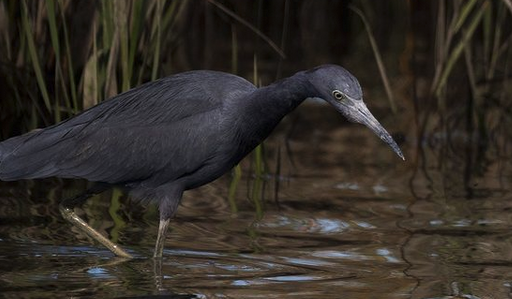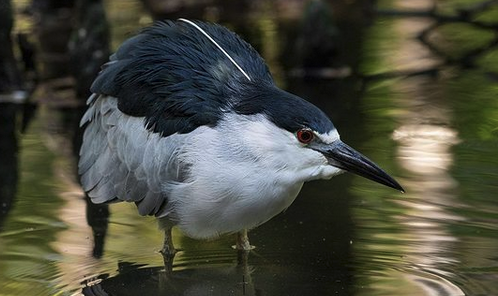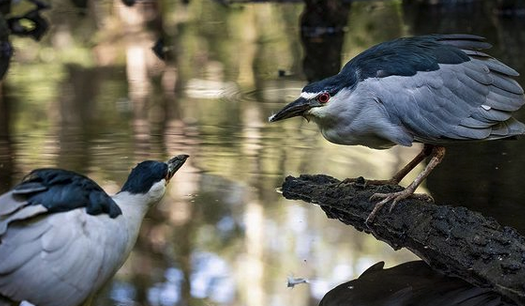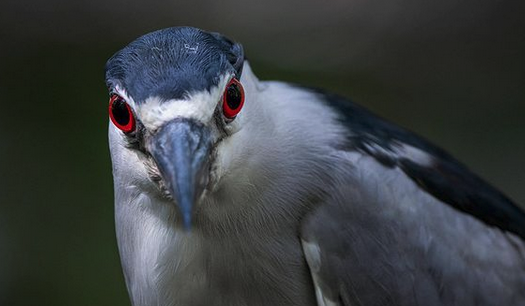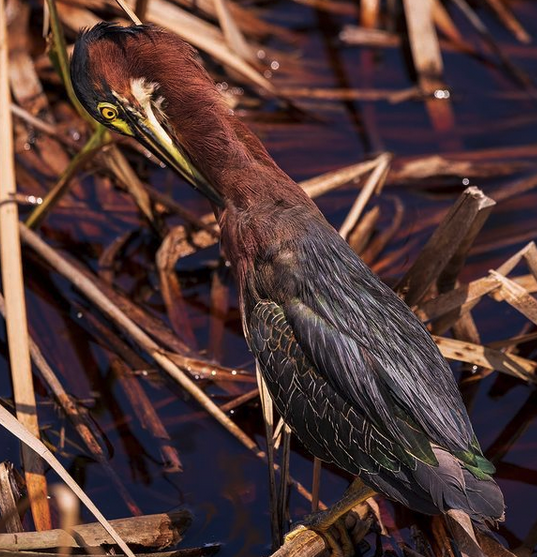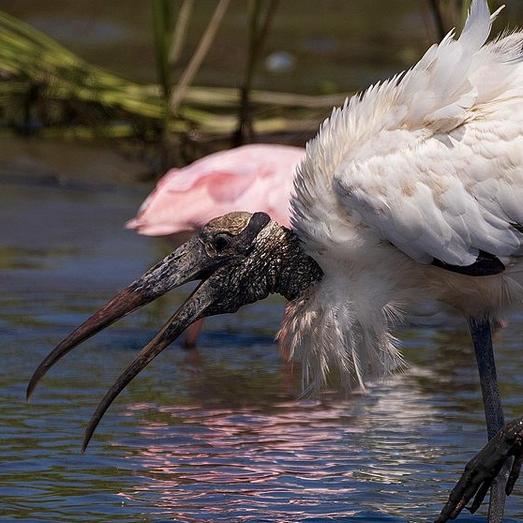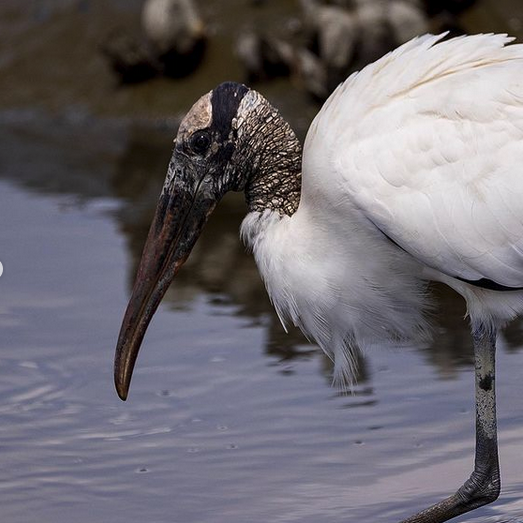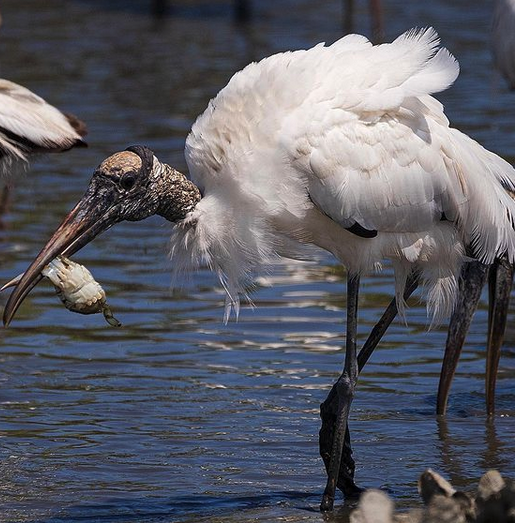Check out these beautiful Little Blue Herons!
I spotted them last week while birding at the Huntington Beach State Park.
It was particularly nice to catch a good look at the adult bird because usually all I see out there are immature Little Blues.
Not that there’s anything wrong with enjoying time with the little ones lol, it’s just I’ve been wanting to get a photo of an adult all year and hadn’t had much of an opportunity to do so until then.
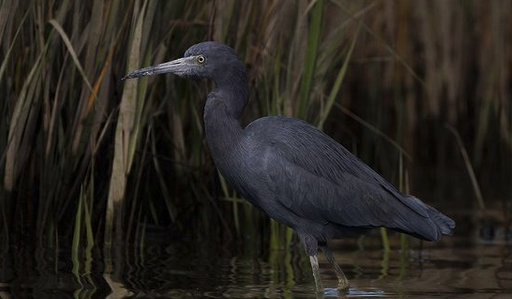
As seen in this photo below, the young birds are dressed in entirely white plumage (with a tiny tinge of grey showing on the tips of their primary’s) during their first year.
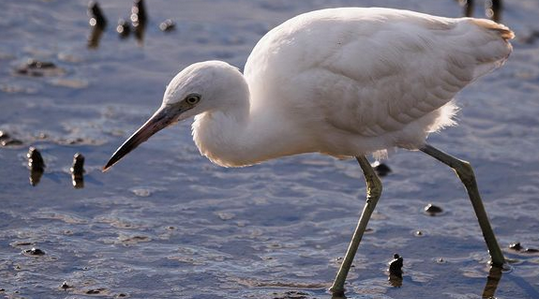
Immature Little Blue Herons are easily confused with other white colored wading shorebirds such as the Snowy Egret.
The best way to tell them apart is to check leg color (black/ Snowy Egret vs. greenish yellow Little Blue Heron).
If your unable to discern the color of the birds legs then body language & posture is a reliable way to tell the two species apart.
Snowy Egrets tend to be very active while foraging. They appear to walk erratically, raising their heads to stand fully upright often to scan the water surface, they are always on the move.
Little Blue Herons are methodical hunters. They walk deliberately with their heads pointed down towards the mud or water while moving at a slow pace, rarely standing upright for more than a second or two.
These elegant birds are permanent residents of North Carolina’s coastal counties. Although a small number of them spend the winter here, as a migratory species they occur more numerously in the spring and summer months.
Look for Little Blue Herons hunting at the edges of freshwater ponds, brackish marshes and on mudflats from March to October.
Photos by @sally_siko of @birdwatching_nc on the mighty mirrorless monster of a camera, the @canonusa
#R5

